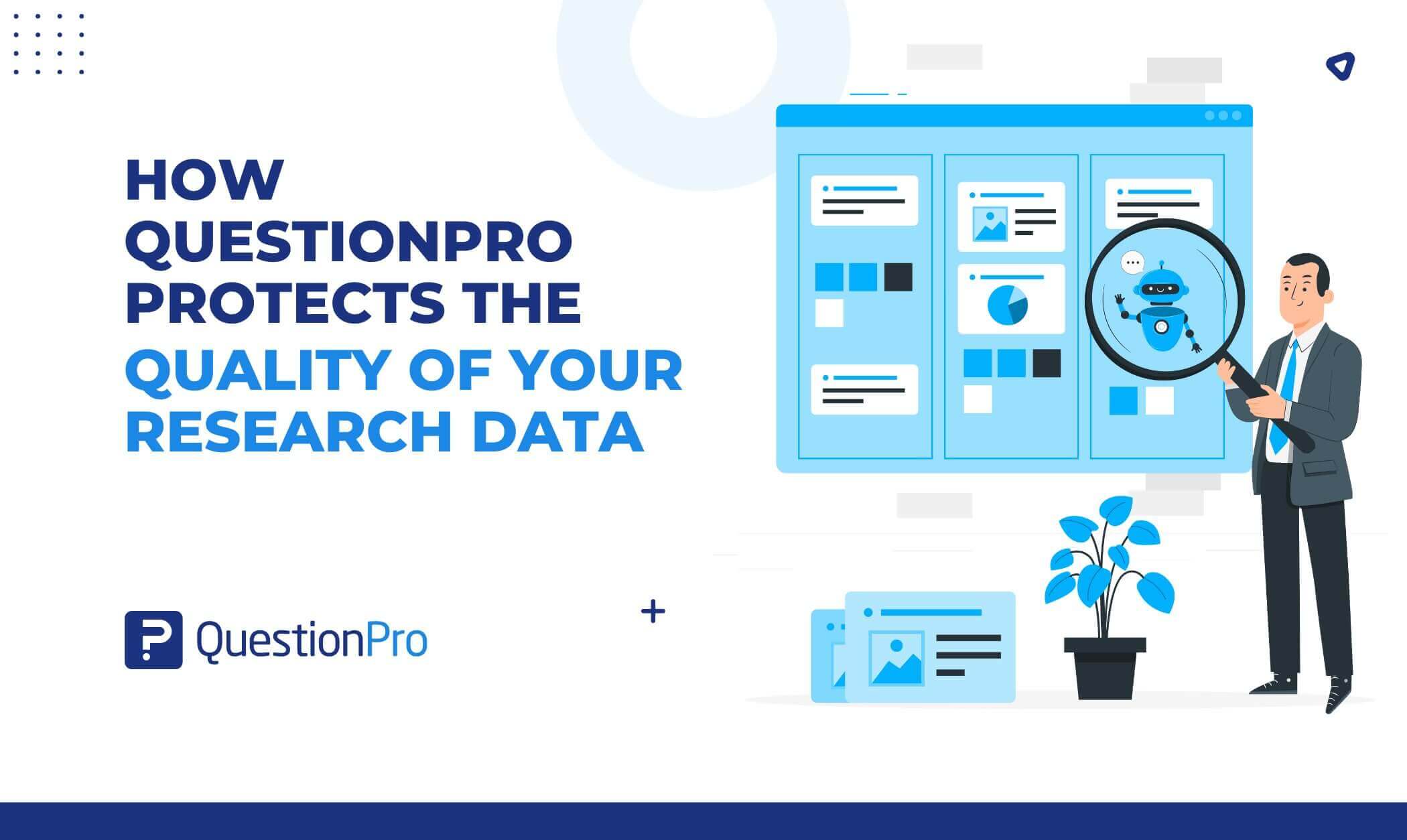
Every research platform attracts its share of party crashers. These fraudsters sneak into your surveys, grab the incentives, and vanish, leaving behind corrupted insights and wasted budgets.
The latest wave? They go by the name J4U.
They mimic real respondents on the surface, but a deeper look reveals a synthetic act.
QuestionPro audience caught them in the act — and here’s how we shut them down before they reached our clients.
It all started with a too-good-to-be-true panel batch
A consumer survey was filled out in record time. Promising? At first. Then came the open-ended responses.
Ten different responses began with:
“In today’s fast-paced world I require solutions that maximize productivity.”
That wasn’t a coincidence. It was a glitch in the matrix. A bot had entered the chat.
How QuestionPro uncovered the digital fingerprints
At QuestionPro, every respondent leaves behind more than 40 data points the moment they enter a survey — a trail of digital fingerprints. We analyze:
- WebGL and canvas renders
- Time zones vs IPs
- Mouse movement and scrolling patterns
- Browser language vs OS matchups
QuestionPro offers a high-level of data quality in surveys to track bad survey data.
For example:
One respondent’s IP indicated a Southeast US location, but the browser reported Mac OS X, the system clock was set to Pacific Time, and the language was Ukrainian.
That combination doesn’t happen by accident.
We also found duplicate canvas hashes across locations. One hash showed up for a respondent in two different cities. Same fingerprint, distinct identities. We rejected both before they could influence the data.
Behavior doesn’t lie — humans wiggle, bots glide.
Within a narrow time window, 63 survey completions were submitted, each taking exactly 8.2 seconds. Mouse movements were highly uniform, with no scrolling or pauses.
This type of interaction is inconsistent with normal human behavior. Genuine respondents typically vary in speed, reread questions, and interact with the survey interface in less predictable ways.
We also observed attempts to mask device identity. Some entries switched from Chrome on Windows to Safari on iOS, yet retained a desktop-only WebGL renderer string. This mismatch indicated the use of emulation or spoofing tools, reinforcing the presence of automated or non-authentic responses.
Why QuestionPro’s data quality stack caught what others missed
J4U traffic passed through three fraud protection vendors before hitting QuestionPro. It looked clean on the surface — but our multi-layered defense caught them cold.
Here’s how we did it:
1. Digital fingerprinting
We analyze GPU strings tied to hardware. J4U mimicked a MacBook M2 while running on a Windows sandbox — that mismatch triggered our first red flag.
Explore digital fingerprinting
2. Behavioral analysis
Mouse data is logged every 50ms. Humans pause, drift, click randomly. J4U moved with machine precision — straight lines, no scrolls, identical response coordinates.
3. Human verification
We send follow-up emails to a random sample of respondents. Genuine users usually reply. With J4U, 17 of 20 bounced, and the rest stayed silent.
4. Open-end audits
In one study, 12 users wrote the identical phrase:
“Reliable connectivity empowers me to thrive in a dynamic landscape.”
Our system flagged any batch where 9 or more consecutive words repeated. Twelve fake entries were removed instantly.
The real cost of fraud: burned budgets and bad decisions
In one case, a project was paused early due to fraud detection. The result:
- $12,000 saved in incentives
- False confidence in a new idea avoided
- Clean insights delivered to decision-makers
And that’s just one example.
Data quality lessons for today’s research professionals
Want to keep your data clean? Start with these four principles:
1. Demand source transparency
Always ask your sample provider about upstream sources. If J4U is on the list, isolate or double-verify that traffic.
2. Watch completion patterns
Be wary of:
- Identical survey durations
- Copy-paste open ends
- Device strings that mismatch the user’s geography
3. Send a simple follow-up email
A quick thank-you note and one follow-up question weed out most fakers and improve engagement with real respondents.
4. Trust your platform
QuestionPro updates its fraud detection models weekly, scans for anomalies, and blocks thousands of bots every month.
Explore our research audience capabilities
The final word: cheap data isn’t cheap
Low-cost survey panels may reduce short-term expenses, but they often introduce high-risk data quality issues that compromise the reliability of research outcomes. Poor data leads to inaccurate insights, wasted resources, and flawed decision-making.
At QuestionPro, we take a proactive approach to fraud prevention. By investing in layered defenses and real-time quality checks, we ensure that unreliable respondents, such as J4U, are identified and removed before they impact your results. Our clients receive clean, credible data every time.
Get started with QuestionPro for worry-free research
Whether you’re running quick-turn concept tests or national benchmarks, make sure you’re working with a partner who fights for your data.
Ready for fraud-free insights? Talk to us now
Or explore how QuestionPro keeps your data clean:
Learn about our data quality features







